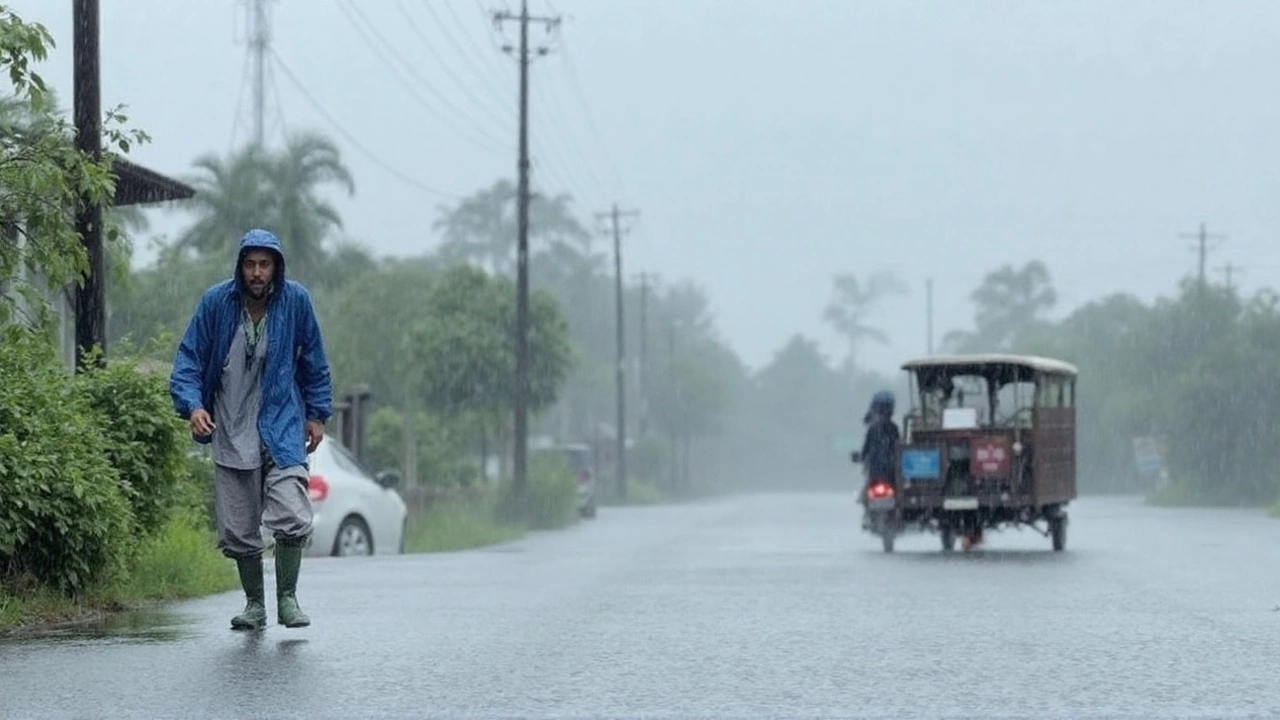Super Typhoon Ragasa – What You Need to Know
When talking about Super Typhoon Ragasa, a powerful tropical system that hit the Pacific in 2025 with sustained winds over 150 mph, massive rainfall and widespread damage. Also known as Typhoon Ragasa, this storm illustrates how Typhoon, a mature tropical cyclone in the northwest Pacific region can rapidly intensify when sea‑surface temperatures rise above 26.5 °C. The event also ties directly to Tropical Cyclone, the broader class of rotating storm systems that develop over warm ocean waters, and shows why Weather Forecasting, the science of predicting atmospheric conditions using models and satellite data is critical for early warnings. Finally, the aftermath of Ragasa underscores the role of Disaster Preparedness, the set of plans, resources and actions taken to minimize loss before, during, and after a disaster. In short, Super Typhoon Ragasa encompasses extreme wind speeds, massive rain totals, and a cascade of challenges that ripple through communities and agencies alike.
How Ragasa Connects to Key Weather Concepts
First off, a typhoon like Ragasa forms when warm ocean water fuels deep convection, leading to a low‑pressure core. This process mirrors the general lifecycle of a tropical cyclone: it starts as a tropical disturbance, becomes a tropical depression, then a storm, and can explode into a super typhoon if conditions stay favorable. The central entity of Ragasa therefore requires two main ingredients—high sea‑surface temperatures and low vertical wind shear. When those line up, the storm can tap into the ocean’s heat energy, spinning faster and drawing in more moisture. That’s why climate change, which raises average sea temperatures, is often linked to stronger, more frequent super typhoons.
Next, accurate weather forecasting becomes the lifeline for at‑risk regions. Modern models ingest satellite imagery, buoy data and atmospheric soundings to predict a storm’s track and intensity days in advance. The better the forecast, the more time officials have to activate disaster preparedness protocols—evacuation orders, emergency shelters, and supply distribution. In the case of Ragasa, forecasters gave a 48‑hour lead time, allowing coastal towns to move residents inland and secure critical infrastructure. The synergy between forecasting and preparedness can shave off lives and reduce property loss dramatically.
Finally, disaster preparedness isn’t just about having a plan on paper; it’s about community drills, resilient building codes, and clear communication channels. After Ragasa, many affected areas revamped their early‑warning systems, stocked extra food and medical kits, and invested in flood‑resistant housing. Those steps illustrate a feedback loop: a powerful storm exposes gaps, which then drive improvements that mitigate the impact of the next event. Readers will find that this collection below covers everything from the science of storm formation to practical steps for staying safe when the next super typhoon looms.
Below you’ll discover a range of articles that break down the mechanics of super typhoons, share real‑world forecasting examples, and offer hands‑on advice for disaster preparedness. Dive in to get a clearer picture of how events like Super Typhoon Ragasa shape our understanding of extreme weather and what you can do to stay ahead of the storm.
- Coltrane Everhart
- 23-09-25
- Weather
Super Typhoon Ragasa Slams East Asia, Hong Kong Braces for Record Storm
Super Typhoon Ragasa, the strongest storm of the year, is barreling toward East Asia. Hong Kong has shut schools for two days and cancelled around 700 flights, while mainland China closed schools and businesses in over ten cities. Experts say Hong Kong’s typhoon plans have improved, and AI tools are helping predict the storm’s path. The typhoon brings destructive winds, heavy rain, and storm surge, prompting massive regional emergency actions. Authorities stress the need for cooperation and advanced warnings.
Details